Introduction
Cottage cheese is one of the most versatile and nutrient-rich ingredients you can add to your meals. Whether you’re looking for a healthy snack, a protein-packed breakfast, or a quick dinner idea, cottage cheese can do it all. In this article, we’ll explore a variety of cottage cheese recipes that are both delicious and easy to make.
From savory dishes like casseroles and stuffed peppers to sweet treats like cheesecakes and parfaits, there’s something for everyone. Not only is cottage cheese low in calories and high in protein, but it’s also a fantastic source of essential nutrients like calcium and vitamin B12. Whether you’re following a low-carb, vegetarian, or high-protein diet, these recipes will fit perfectly into your meal plan.
If you’ve ever wondered how to use cottage cheese in creative and tasty ways, this guide is your ultimate resource. Let’s dive into the best cottage cheese recipes that are sure to become staples in your kitchen!

Ingredients: The Foundation of Cottage Cheese Recipes
The ingredients you choose play a pivotal role in making your cottage cheese recipes truly shine. By using high-quality, fresh components, you can enhance both the flavor and texture of your dishes. Additionally, knowing how to pair cottage cheese with complementary ingredients allows you to explore a world of culinary possibilities. Let’s break down the essentials for both savory and sweet creations.
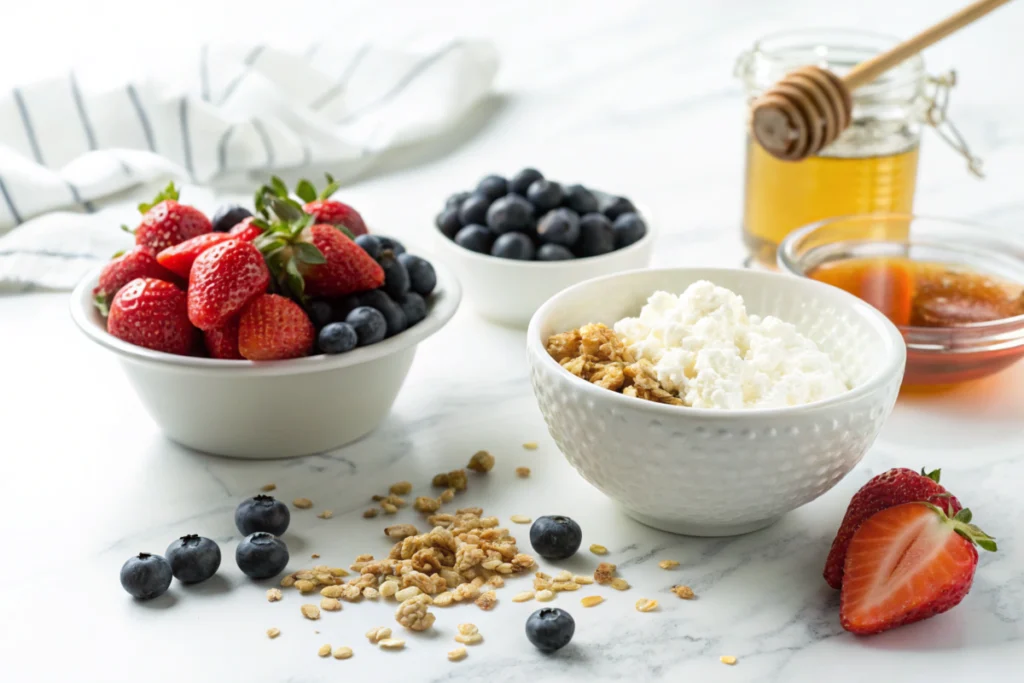
Main Ingredients for Savory Cottage Cheese Recipes
When crafting savory dishes, it’s crucial to balance the creamy richness of cottage cheese with other bold and hearty flavors. Here are some must-have ingredients:
- Vegetables: Think spinach, bell peppers, zucchini, and tomatoes. These add freshness and texture, making your dishes both colorful and nutritious.
- Proteins: Pair cottage cheese with lean meats like chicken or turkey, or go vegetarian with eggs or legumes for added protein.
- Herbs and Spices: Fresh herbs like parsley, basil, or dill, along with spices such as paprika, garlic powder, or cumin, can elevate the dish’s flavor profile.
Tip: For stuffed peppers or casseroles, mix cottage cheese with sautéed vegetables and herbs to create a filling that’s bursting with flavor.
Essential Ingredients for Sweet Cottage Cheese Recipes
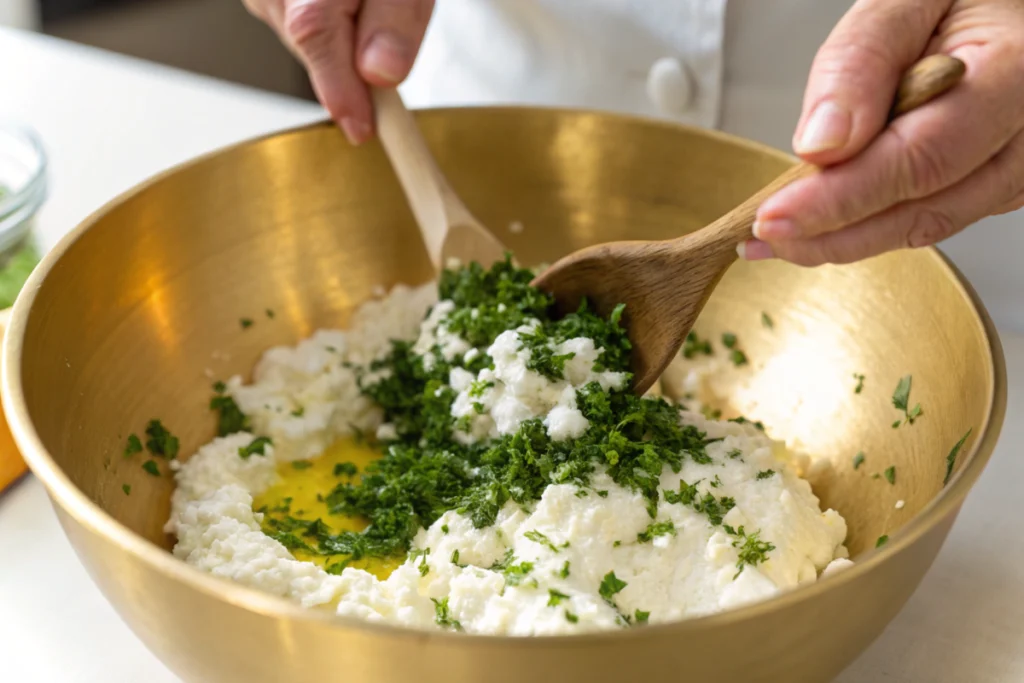
Cottage cheese isn’t just for savory dishes—it also works wonderfully in desserts and breakfast options. To create balanced and deliciously sweet recipes, consider these ingredients:
- Fruits: Fresh berries, bananas, or peaches add natural sweetness and pair beautifully with the creamy texture of cottage cheese.
- Sweeteners: Use honey, maple syrup, or stevia to sweeten your recipes without overpowering them.
- Grains and Nuts: Incorporate oats, granola, or chopped nuts for added crunch and complexity in dishes like parfaits or breakfast bowls.
Pro Tip: Blend cottage cheese with a splash of vanilla extract and honey for a creamy base that works perfectly in fruit-based desserts.
Substitutions for Dietary Preferences
One of the best things about cottage cheese recipes is their adaptability. Whether you’re catering to dietary needs or simply experimenting with flavors, substitutions can make your dishes more inclusive and creative.
- Dairy-Free Alternatives: For those avoiding dairy, swap traditional cottage cheese with a plant-based alternative made from cashews or almonds.
- Low-Sodium Options: Choose low-sodium cottage cheese to reduce salt content in savory recipes.
- Vegan Variations: Combine silken tofu with lemon juice and nutritional yeast to replicate the creamy texture of cottage cheese.
The Role of Fresh Ingredients
Using fresh ingredients can make all the difference in your recipes. Whether it’s ripe fruits for desserts or crisp vegetables for savory dishes, freshness enhances both flavor and nutrition.
Tip: Always taste-test your dish before serving to ensure the flavors are balanced, especially when working with herbs and spices.
By starting with these high-quality, versatile ingredients, you’ll lay the foundation for cottage cheese recipes that are as delicious as they are nutritious. Let’s move on to preparation techniques that will bring these flavors to life!
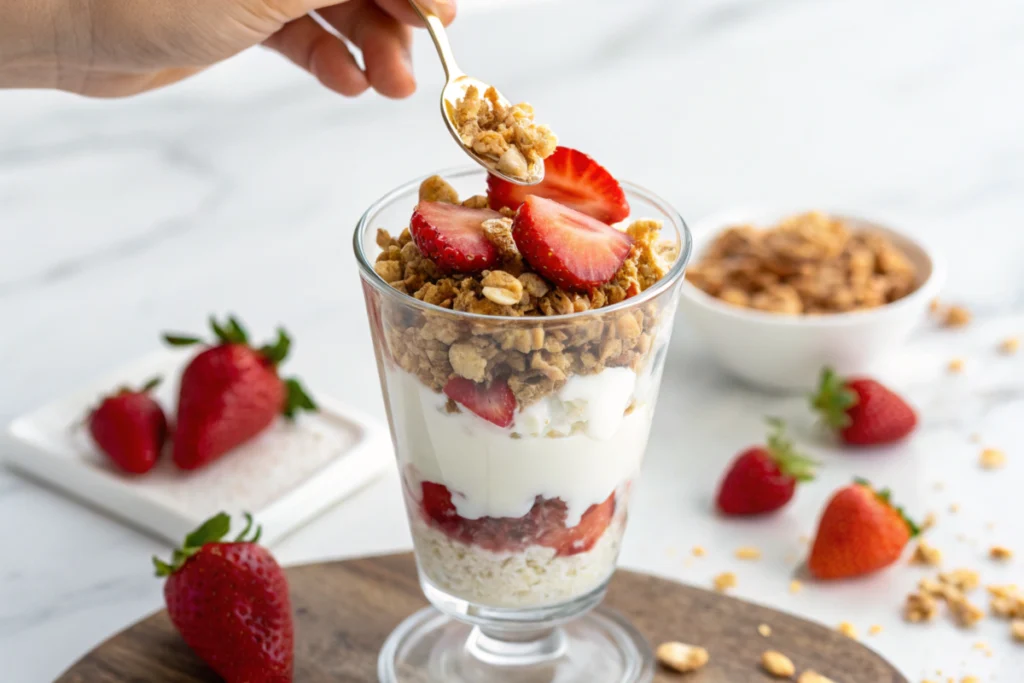
Preparation Techniques: Bringing Cottage Cheese Recipes to Life
The way you prepare cottage cheese recipes can significantly impact the final outcome. From achieving the perfect texture to layering flavors effectively, preparation is where your ingredients truly come together. With a few simple techniques, you can take your cottage cheese dishes to the next level, ensuring they’re both delicious and visually appealing.
Preparing Savory Cottage Cheese Dishes
Savory recipes require thoughtful preparation to balance bold flavors and creamy textures. Follow these techniques to ensure your dishes turn out perfectly every time:
- Draining Excess Liquid: Cottage cheese can be quite watery, especially the low-fat variety. To avoid soggy results in dishes like casseroles or stuffed vegetables, strain the cottage cheese using a fine mesh strainer or cheesecloth.
- Blending for Creaminess: For recipes like dips, spreads, or sauces, blend cottage cheese in a food processor until smooth. This creates a creamy base that rivals cream cheese or ricotta.
- Layering for Casseroles: When using cottage cheese in layered dishes like lasagna or baked pasta, mix it with eggs and herbs to create a rich, cohesive filling.
Pro Tip: Sauté onions, garlic, or spices before mixing them with cottage cheese to deepen the flavor in savory recipes.
Techniques for Sweet Cottage Cheese Recipes
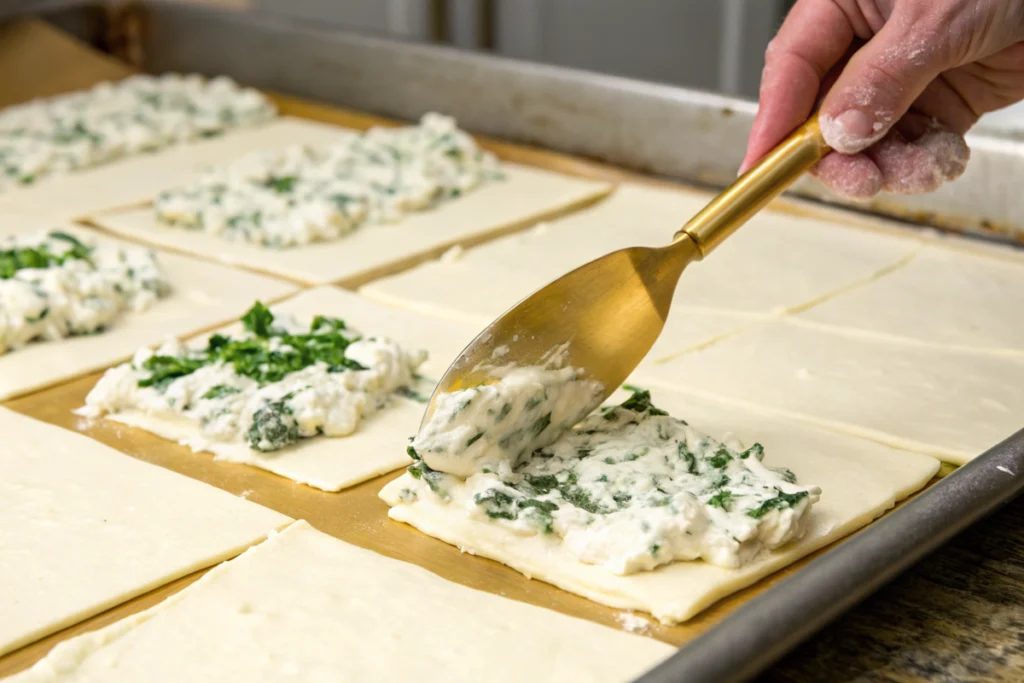
Sweet recipes often require a different approach to highlight the creamy, mild flavor of cottage cheese. Here are some preparation tips to keep in mind:
- Blending for Smoothness: When making desserts like cheesecake or parfaits, blend cottage cheese with sweeteners and flavorings until silky smooth. This ensures a creamy consistency without lumps.
- Layering in Parfaits: For breakfast bowls or parfaits, layer cottage cheese with granola, fresh fruits, and a drizzle of honey for a visually appealing and tasty result.
- Folding in Ingredients: To retain texture in recipes like pancakes or muffins, fold cottage cheese gently into the batter rather than overmixing.
Tip: For baked desserts, use full-fat cottage cheese to achieve a richer flavor and creamier texture.
Time-Saving Preparation Tips
Busy schedules don’t have to mean compromising on flavor. Here are some tips to streamline your cottage cheese recipe prep:
- Pre-Mixing Spices and Herbs: Prepare spice blends or chopped herbs in advance to quickly season your cottage cheese dishes.
- Make-Ahead Meals: Many cottage cheese recipes, such as lasagna or breakfast casseroles, can be assembled ahead of time and baked later.
- Quick Blending: Use an immersion blender directly in the container for quick and easy preparation of dips or spreads.
Troubleshooting Common Issues
Even with careful preparation, things don’t always go as planned. Here’s how to fix common problems:
- Too Watery: If your cottage cheese dish turns out watery, try adding a thickening agent like cornstarch or blending it with a firmer dairy product, such as cream cheese.
- Lack of Flavor: If your dish feels bland, don’t be afraid to adjust seasonings after mixing. A pinch of salt, a squeeze of lemon juice, or an extra sprinkle of herbs can make all the difference.
- Overbaking: To prevent baked dishes from drying out, cover them with foil during the first half of cooking, then remove it for browning.
Pro Tip: Taste as you go! Adjusting flavors during preparation ensures the final dish is perfectly balanced.
By following these preparation techniques, you’ll bring out the best in your cottage cheese recipes. Now that your dishes are prepped and ready, let’s dive into the cooking process for optimal results.
Cooking and Serving: Perfecting Your Cottage Cheese Recipes
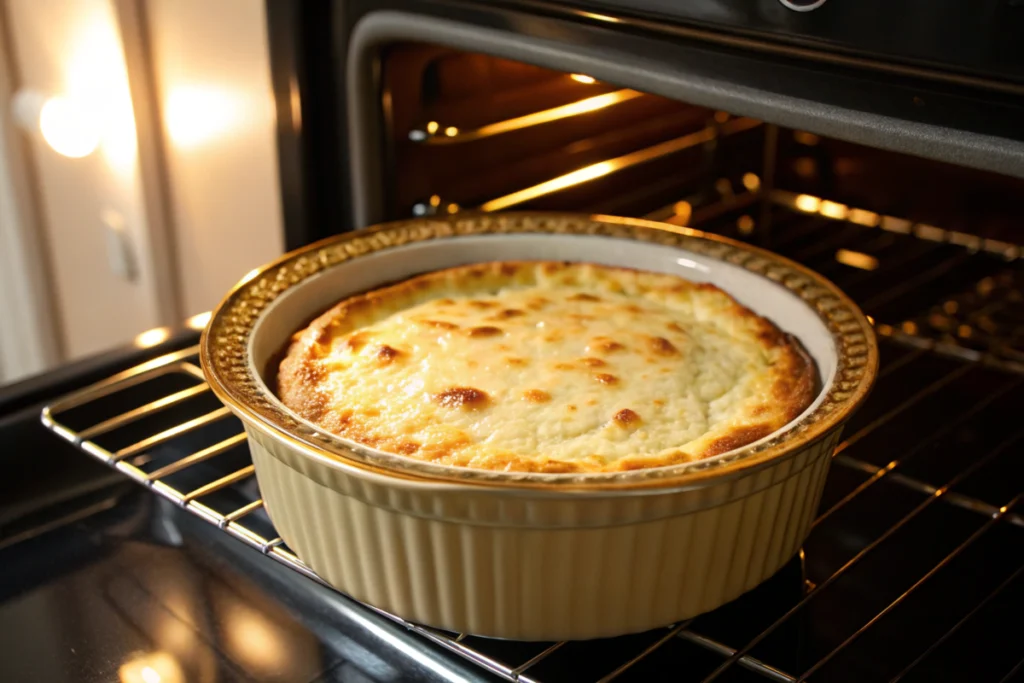
Cooking is where your cottage cheese creations come to life. By using the right techniques and paying attention to details, you can ensure that every dish turns out perfectly cooked and bursting with flavor. In addition, how you serve your recipes can elevate them even further, making them look as good as they taste.
Cooking Savory Cottage Cheese Recipes
Savory dishes often require careful cooking to balance textures and flavors. Follow these tips to achieve consistently great results:
- Baking for Even Cooking: When making casseroles or baked pasta dishes, always preheat your oven and use a middle rack for even heat distribution. This ensures the cottage cheese blends seamlessly with the other ingredients.
- Simmering for Creamy Sauces: If you’re making a sauce, simmer cottage cheese gently with broth or milk to create a smooth and velvety consistency. Stir continuously to prevent sticking or curdling.
- Sautéing with Vegetables: For quick and flavorful dishes, sauté your vegetables first and then fold in cottage cheese at the end. This helps retain its creamy texture without overcooking.
Tip: Always taste and adjust seasoning during cooking. Cottage cheese can sometimes mellow other flavors, so a final touch of salt, pepper, or spices can make a big difference.
Cooking Sweet Cottage Cheese Recipes
Sweet recipes benefit from a balance of cooking techniques and precise timing. Here’s how to get it just right:
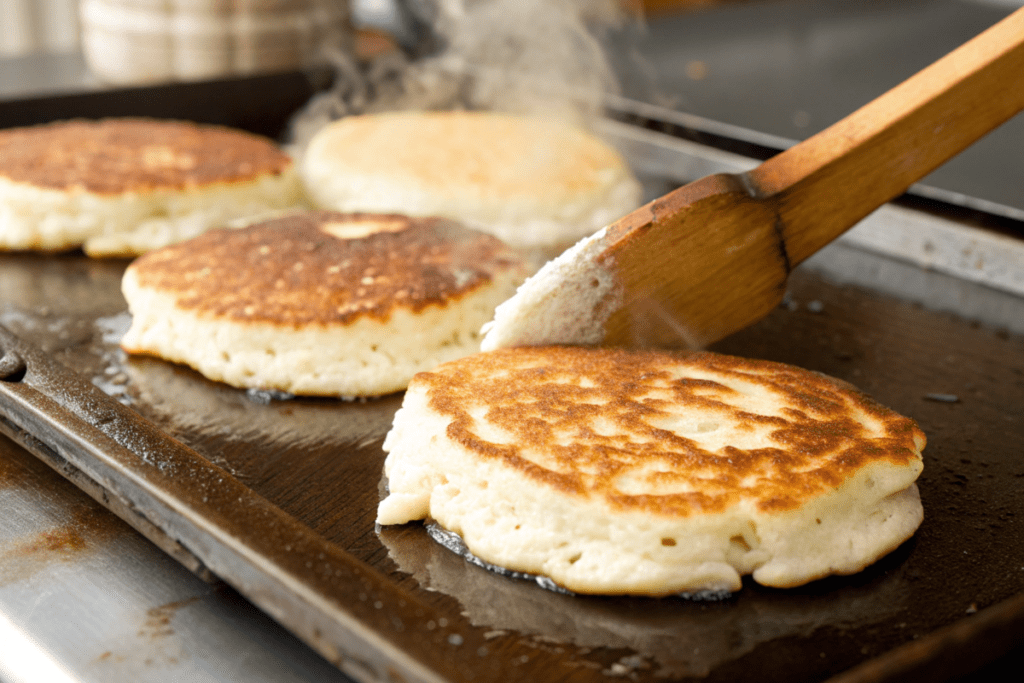
- Baking Cheesecakes: When baking cottage cheese cheesecakes, use a water bath to prevent cracking and ensure even cooking. The steam helps maintain a creamy texture.
- Blending for Smooth Textures: For blended desserts like puddings or mousse, process cottage cheese thoroughly to eliminate any lumps before adding other ingredients.
- Chilling No-Bake Desserts: Many sweet cottage cheese recipes, like parfaits or no-bake cheesecakes, need time to chill for flavors to meld. Plan for at least 2-3 hours of refrigeration.
Pro Tip: Use parchment paper to line baking pans for easier removal of delicate baked goods like cheesecakes or bars.
Creative Serving Ideas for Cottage Cheese Recipes
Once your dish is cooked to perfection, presentation is the next step. How you serve your recipe can enhance the dining experience and make it feel restaurant-quality.
- Individual Portions: Serve dishes like lasagna or casseroles in individual ramekins for a sophisticated touch.
- Layering for Visual Appeal: For parfaits or layered casseroles, alternate layers of cottage cheese and other ingredients to create an eye-catching presentation.
- Garnishing Thoughtfully: A sprinkle of fresh herbs, a drizzle of honey, or a handful of chopped nuts can elevate the final look and flavor of your dish.
Tip: Choose plates or bowls that complement the colors of your recipe. For example, white dishes make vibrant fruits and vegetables pop, while dark plates highlight creamy casseroles.
Pairing with Complementary Sides
To round out your cottage cheese recipes, pair them with sides that enhance their flavors:
- For Savory Dishes: Serve with crusty bread, a light salad, or roasted vegetables for a balanced meal.
- For Sweet Dishes: Pair with fresh fruit, a warm cup of coffee, or a glass of dessert wine for a luxurious finish.
Pro Tip: Balance rich cottage cheese dishes with lighter sides to create a well-rounded meal.
Storing and Reheating Your Recipes
Proper storage and reheating ensure that your leftovers taste just as good as they did on day one.
- For Refrigeration: Store cooked dishes in airtight containers in the fridge for up to three days.
- For Freezing: Many cottage cheese dishes, such as casseroles or baked goods, freeze well. Wrap them tightly in plastic wrap and aluminum foil to prevent freezer burn.
- Reheating Tips: Reheat dishes in the oven at a low temperature (around 300°F) to maintain their texture. For creamy recipes, add a splash of milk or broth to keep them moist.
Tip: Avoid microwaving cottage cheese dishes at high heat, as it can cause the cheese to dry out or separate.
By mastering these cooking and serving techniques, you’ll bring out the best in every cottage cheese recipe. Up next, let’s explore variations and customizations to make these dishes truly your own!
Variations and Customizations: Making Cottage Cheese Recipes Your Own

One of the best things about cottage cheese is its versatility. Whether you prefer savory or sweet dishes, this ingredient can be adapted to suit any flavor profile or dietary preference. By experimenting with different ingredients and techniques, you can create unique recipes that cater to your tastes. Let’s explore some exciting variations and customizations to inspire your next culinary masterpiece.
Regional Twists on Cottage Cheese Recipes
Incorporating regional flavors into your cottage cheese recipes can open up a world of culinary possibilities. With just a few adjustments, you can transform familiar dishes into something new and exciting.
- Mediterranean Style: Mix cottage cheese with olive oil, lemon juice, and fresh herbs like dill and parsley. Use it as a topping for roasted vegetables or a spread for pita bread.
- Mexican-Inspired Flavors: Add chopped cilantro, lime zest, and a dash of chili powder to cottage cheese. Use this zesty blend as a filling for tacos or enchiladas.
- Indian Fusion: Combine cottage cheese with turmeric, cumin, and coriander for a flavorful twist. Serve it as a side dish or use it as a base for curries.
Tip: Adjust the seasoning levels to match your preferred spice tolerance. Taste as you go to achieve the perfect balance of flavors.
Sweet Variations for Cottage Cheese Desserts
Sweet recipes provide endless opportunities to experiment with flavors and textures. Try these fun ideas to elevate your desserts:
- Tropical Parfaits: Layer cottage cheese with pineapple chunks, shredded coconut, and a drizzle of honey for a refreshing treat.
- Chocolate Dream: Blend cottage cheese with cocoa powder and a touch of sweetener, then layer it with crushed graham crackers and whipped cream for a quick chocolate mousse.
- Berry Bliss Cheesecake: Top a cottage cheese cheesecake with a medley of fresh berries and a glaze of apricot jam for a vibrant, fruity finish.
Pro Tip: For a smoother texture in desserts, blend the cottage cheese until completely creamy before incorporating it into the recipe.
Customizing for Special Diets
Cottage cheese recipes are highly adaptable, making them ideal for various dietary needs. Here’s how to tailor them to specific preferences:
- Low-Carb or Keto: Use cottage cheese as a base for savory zucchini noodles, or blend it into creamy soups for added protein without the carbs.
- Gluten-Free: Ensure all additional ingredients, such as breadcrumbs or pasta, are gluten-free. For desserts, substitute traditional crusts with nut-based alternatives.
- High-Protein Boost: Add extra protein by blending cottage cheese with egg whites or Greek yogurt. This is perfect for fitness enthusiasts looking to fuel their day.
Tip: When adjusting recipes for dietary needs, double-check all ingredient labels to avoid hidden allergens or unwanted additives.
Enhancing Flavors and Textures
Sometimes, small changes can make a big impact. Here are a few ways to tweak your recipes for even better results:
- Adding Crunch: Sprinkle toasted nuts, seeds, or breadcrumbs on top of savory dishes for a satisfying texture contrast.
- Boosting Creaminess: Mix cottage cheese with mascarpone, ricotta, or sour cream for an even richer texture in casseroles and desserts.
- Brightening the Flavor: A squeeze of fresh lemon juice or a dash of vinegar can add a pop of brightness to savory dishes. For sweet recipes, a pinch of salt enhances the overall flavor balance.
Pro Tip: Don’t be afraid to experiment with unexpected combinations! Cottage cheese pairs well with both bold and subtle flavors, so let your creativity shine.
Seasonal Variations for Year-Round Enjoyment
Adapting your cottage cheese recipes to the seasons keeps them fresh and exciting throughout the year:
- Spring and Summer: Highlight fresh produce like asparagus, zucchini, or berries. Light, chilled recipes like cottage cheese parfaits or veggie-stuffed wraps are perfect for warmer months.
- Fall and Winter: Opt for heartier ingredients like roasted squash, mushrooms, or apples. Warm casseroles and baked desserts with cinnamon and nutmeg are comforting during cooler weather.
By exploring these variations and customizations, you can transform cottage cheese into an endless array of creative dishes. Whether you’re in the mood for something light and refreshing or rich and indulgent, the possibilities are truly limitless.
Nutritional Analysis: Why Cottage Cheese Deserves a Spot in Your Diet
Cottage cheese is not just versatile—it’s also a nutritional powerhouse. Whether you’re looking to increase your protein intake, manage your weight, or simply add a wholesome ingredient to your meals, cottage cheese offers a range of health benefits. Understanding its nutritional profile can help you make informed choices when incorporating it into your recipes.
Nutritional Breakdown of Cottage Cheese
Cottage cheese is packed with nutrients that make it a great addition to any meal. Let’s break down its key components:
- Protein: With about 28 grams of protein per cup, cottage cheese is an excellent option for muscle recovery, satiety, and energy.
- Calcium: It’s rich in calcium, which supports bone health and strengthens teeth.
- Low in Carbs: Cottage cheese typically contains only 3-6 grams of carbohydrates per serving, making it ideal for low-carb and keto diets.
- Rich in B Vitamins: It’s also a good source of vitamin B12, which plays a key role in energy production and brain function.
Comparing Cottage Cheese to Other Dairy Products
While other dairy products like yogurt or ricotta are also healthy, cottage cheese stands out for its unique nutritional advantages.
- Higher Protein Content: Cottage cheese has more protein per serving compared to regular yogurt or cream cheese, making it a better choice for high-protein meals.
- Lower in Sugar: Unlike flavored yogurts, cottage cheese is naturally low in sugar, giving you more control over the sweetness in your recipes.
- More Versatility: Its mild flavor makes it suitable for both sweet and savory recipes, unlike cream cheese or ricotta, which tend to lean toward specific uses.
Potential Concerns and How to Address Them
While cottage cheese is healthy for most people, it’s important to consider potential concerns:
- Sodium Content: Some varieties of cottage cheese are high in sodium, which may not be suitable for those with hypertension. To reduce sodium intake, choose low-sodium versions.
- Lactose Intolerance: For individuals sensitive to lactose, lactose-free cottage cheese is available and offers the same benefits.
- Fat Content: While full-fat options are rich and satisfying, they may not fit into every diet. If you’re watching your calorie intake, opt for low-fat or fat-free versions.
Tip: Always read labels carefully to find the cottage cheese that best suits your dietary needs. Look for brands with fewer additives and preservatives.
Adding More Nutrition to Cottage Cheese Recipes
While cottage cheese is already nutritious, you can boost its health benefits even further by pairing it with other wholesome ingredients:
- For Extra Protein: Mix it with quinoa, lentils, or lean meats to create a high-protein meal.
- To Add Fiber: Combine cottage cheese with fiber-rich fruits like berries or vegetables such as spinach and kale.
- To Increase Healthy Fats: Add nuts, seeds, or avocado to your cottage cheese recipes for an extra dose of heart-healthy fats.
Pro Tip: If you’re preparing a savory dish, stir in some nutritional yeast for added flavor and a boost of B vitamins.
Nutritional Table for Cottage Cheese Recipes
Here’s a quick look at the average nutritional values of cottage cheese, so you know what you’re getting with each serving:
Tip: Customize the nutritional profile by mixing in ingredients like chia seeds for omega-3s or spinach for additional iron and vitamins.
By understanding the nutritional benefits of cottage cheese and pairing it with complementary ingredients, you can create recipes that are not only delicious but also packed with health benefits. Now that you’re equipped with this knowledge, let’s address some common questions about cottage cheese recipes to help you further.
Frequently Asked Questions About Cottage Cheese Recipes
Whether you’re new to using cottage cheese in your meals or looking to expand your repertoire, it’s natural to have questions. From preparation tips to storage advice, this section will address some of the most common inquiries. By answering these questions, you’ll gain the confidence to experiment with cottage cheese in both sweet and savory dishes.
Common Questions About Cottage Cheese Recipes
1. Can I use cottage cheese as a substitute for ricotta?
Absolutely! Cottage cheese is an excellent substitute for ricotta, especially if you’re looking for a lighter alternative. While ricotta is slightly creamier, blending cottage cheese can mimic the same texture and consistency. For dishes like lasagna or stuffed shells, use blended cottage cheese mixed with herbs and a pinch of salt.
Pro Tip: If you prefer a smoother texture, strain the cottage cheese before blending it to remove excess liquid. This makes it nearly identical to ricotta.
2. How do I reduce the saltiness of cottage cheese?
If you find your cottage cheese too salty, you can rinse it to reduce the sodium content. Place the cottage cheese in a fine-mesh strainer and rinse it gently under cold water. Let it drain completely before using it in your recipe.
Tip: Choose low-sodium varieties if you’re watching your salt intake, as they’re readily available in most grocery stores.
3. Can cottage cheese be frozen?
Yes, but with a few considerations. Cottage cheese can be frozen for up to 2-3 months, but its texture may become slightly grainy after thawing. Frozen cottage cheese works best in cooked dishes like casseroles, where the texture change is less noticeable. Avoid freezing it for use in cold recipes like parfaits or dips.
Pro Tip: Divide cottage cheese into smaller portions before freezing. This way, you can thaw only what you need and avoid waste.
Additional Tips for Using Cottage Cheese in Recipes
How to Prevent Watery Cottage Cheese in Recipes:
Cottage cheese can release liquid during cooking, especially in baked dishes. To avoid this, strain it using cheesecloth or a fine sieve before adding it to your recipe. This step ensures your dishes remain creamy and flavorful without excess moisture.
Pro Tip: For even better results, pat the strained cottage cheese dry with a paper towel before mixing it into your ingredients.
What Are the Best Ways to Store Leftover Cottage Cheese?
To keep your cottage cheese fresh, transfer it to an airtight container after opening. Store it in the refrigerator and consume it within 5-7 days. If a liquid layer forms on top, simply stir it back in before use.
Tip: Avoid leaving cottage cheese at room temperature for extended periods, as it can spoil quickly. Always return it to the fridge promptly after use.
Final Thoughts on Cottage Cheese Recipes
Cottage cheese is an incredibly versatile ingredient, and these FAQs have hopefully answered any lingering questions you may have had. By understanding how to use it effectively and confidently, you can create recipes that are nutritious, delicious, and full of variety.
Now that you’re armed with all this knowledge, it’s time to experiment and make cottage cheese the star of your kitchen. Whether you’re whipping up a savory casserole, a sweet parfait, or something entirely unique, you can enjoy all the benefits this powerhouse ingredient has to offer.
⏸️ Continue?

